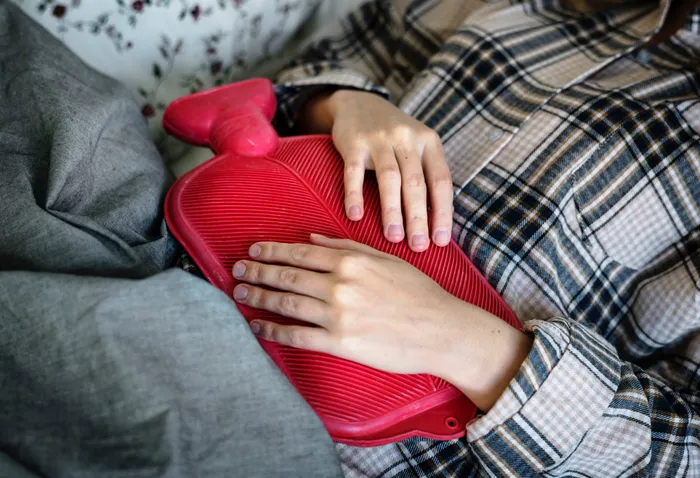What is premenstrual dysphoric disorder and can it be treated?

Physical symptoms of premenstrual dysphoric disorder include breast tenderness or swelling, joint or muscle pain, and a sensation of ‘bloating’ or weight gain. Picture: Pexels
Premenstrual dysphoric disorder (PMDD) is a rare yet potentially debilitating disorder linked to a woman’s menstrual cycle. An estimated 2-5% of menstruating women report symptoms meeting the diagnostic criteria of this condition at some point during their lives.
A psychiatrist and a gynaecologist share their perspectives on this women’s health issue, and explain how it differs from the more commonly known premenstrual syndrome (PMS).
“PMDD can affect various aspects of a woman’s life, including family, social, and occupational functioning, however, as with other mood disorders, a significant concern is the potential for women with PMDD to develop suicidal thoughts if they find it difficult to cope with its impact on their lives,” says Dr Lavinia Lumu, a psychiatrist who practises at Akeso Randburg – Crescent Clinic.
She says that this is in contrast to PMS, which about half of women experience at some time between puberty and menopause. “Traditionally, there has been social stigma attached to menstruation, as this was considered a private or taboo subject. As PMDD is usually diagnosed through women self-reporting their symptoms, it is possible that this stigma could have resulted in fewer women seeking assistance for it,” she points out.
Symptoms of PMDD
According to Lumu, to reach a diagnosis of PMDD a woman should experience a set of five symptoms from the potential range of symptoms listed below. These specifically begin to develop the week before the menstrual period and ease within several days from the onset of menstruation. A diagnosis may be reached when these occur for at least two consecutive monthly cycles in the same year, where other causes have been ruled out.
One of the set of five symptoms should be from the potential symptoms listed directly below:
- Mood swings
- Marked irritability or anger
- Markedly depressed mood
- Noticeable anxiety and tension
In addition, the woman should also have another four symptoms from the above list and/or the one below:
- Decreased interest in everyday activities
- Difficulty concentrating
- Lethargy and a marked lack of energy
- Marked change in appetite (for example, overeating or specific food cravings)
- Insomnia or oversleeping
- Feeling overwhelmed or ‘out of control’
Physical symptoms include breast tenderness or swelling, joint or muscle pain, a sensation of‘bloating or weight gain.
Although each PMDD sufferer’s experience is unique, some women have described the experience of going through PMDD as ‘feeling like a prisoner in my own body’, ‘very debilitating’, ‘a battle to survive those days, but my family expects that life must continue as usual’.
Some describe acute anxiety, while some have reported uncharacteristic feelings or outbursts of rage, for instance: “I feel so angry that at the time I don’t care what I say or who I say it to. I feel so upset and I even have suicidal thoughts, but when the PMDD passes, I feel content and positive again as usual.”
Reaching a diagnosis
“In my practice I’ve met a few women who thought they may have premenstrual dysphoric disorder, however, in most cases the symptoms were attributable to other causes,” adds Dr Marabe Simon Mothiba, a gynaecologist who practices at Netcare Pholoso Hospital in Polokwane.
Mothiba explains that it is essential to consider each woman’s symptoms in the context of her medical and family history, combined with a physical examination and more specific tests that may be required, to reach a diagnosis.
“Thyroid disorders are a relatively common possible cause of symptoms such as these, and we would need to exclude thyroid problems and other conditions or factors that might account for the difficulties the woman is experiencing. We ask the patient about the severity of her symptoms, any medications she might be taking, and also explore whether there may be other underlying issues. By exclusion, we reach a diagnosis of PMDD or another underlying medical disorder,” he explains.
Treatment options
“Once a PMDD diagnosis is reached, the management of the condition depends on the severity and the women’s individual circumstances. We start with the more conservative treatment options appropriate to the woman’s condition and circumstances, and where the symptoms are relatively mild, increased exercise can be very helpful,” notes Mothiba.
For patients with more severe symptoms, a multi-disciplinary team, including a gynaecologist and a psychiatrist, supported by other health-care professionals where needed, adopt a holistic approach to treating this complex condition.
According to Lumu, this may involve antidepressant medicines, such as selective serotonin reuptake inhibitors (SSRIs), prescribed by a psychiatrist. “It appears that SSRIs are helpful with treating anxiety symptoms of PMDD, and psychotherapy can complement this by equipping the woman with cognitive-behavioural coping strategies for long-term resilience during such times. If the woman is not planning a pregnancy, hormonal treatments may be recommended if SSRIs do not offer relief.”
Related Topics: